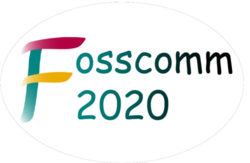One important part of the implementation of the EXT_external_objects and EXT_external_objects_fd groups of extensions for iris (the Intel gallium OpenGL driver) was the semaphore synchronization (EXT_semaphore extension). We’ve seen how the GL semaphores structs and functions that are introduced by this extension should be used in previous interoperability posts. In this post, I’ll try to describe the methods we’ve used to debug the EXT_semaphore implementation itself as well as the fences backend of the iris driver without getting into many driver internals details.
Tag: opengl
Debugging WebKit graphics using APItrace
In my previous post on WebKit, I explained how we can debug the WebProcess using GDB. In this post, I am going to talk about another useful debugging tool that can be used to debug graphics: APItrace.
Building the i965 mesa driver on FreeBSD
EXT_external_objects and EXT_external_objects_fd for the Intel iris driver have been merged into mesa3D! [updated]
This post is a quick status update on OpenGL and Vulkan Interoperability extensions for Linux mesa3D drivers:
Both EXT_external_objects and EXT_external_objects_fd implementations for the Intel iris driver have been finally merged into mesa3D earlier today and will be available in next release! 🎉
Setting up to debug ANGLE with GDB (on Linux)
ANGLE is an EGL/GLES2 implementation on top of other graphics APIs. It is mainly used in systems that lack a native GLES2/GLES3 driver and in some browsers for example Chromium. As recently, I’ve used it for some browsers related work in Igalia‘s WebKit team (more on that coming soon) and had to set it up for debugging with GDB, I’d like to share the few extra settings and the configuration I’ve used to be able to use GDB and step inside the ANGLE API calls to examine the underlying driver API calls, when possible, while I was experimenting with ANGLE-based test programs.
Continue reading Setting up to debug ANGLE with GDB (on Linux)
FOSSCOMM 2020, and a status update on EXT_external_objects(_fd) extensions [en, gr]
FOSSCOMM (Free and Open Source Software Communities Meeting) is a Greek conference aiming to promote the use of FOSS in Greece and to bring FOSS enthusiasts together. It is organized entirely by volunteers and universities and takes place in a different city each year. This year it was virtual as Greece is under lockdown, and although we’ve missed all the fun of the gathering, there were many interesting talks to watch.
My talk was very similar to the one I’ve given in XDC 2020 about OpenGL and Vulkan Interoperability. It was an update on the EXT_external_objects and EXT_external_objects_fd OpenGL extensions status on various mesa drivers, and Igalia‘s work on them.
Continue reading FOSSCOMM 2020, and a status update on EXT_external_objects(_fd) extensions [en, gr]
[OpenGL and Vulkan Interoperability on Linux] Part 10: Reusing a Vulkan stencil buffer from OpenGL
This is 10th post on OpenGL and Vulkan interoperability with EXT_external_objects and EXT_external_objects_fd. We’ll see the last use case I’ve written for Piglit to test the extensions implementation on various mesa drivers as part of my work for Igalia. In this test a stencil buffer is allocated and filled with a pattern by Vulkan and then it is used in OpenGL to render something else. We validate that the pattern has been imported correctly and we repeat the process for other depth-stencil formats.
[OpenGL and Vulkan Interoperability on Linux] Part 9: Reusing a Vulkan z buffer from OpenGL
In this 9th post on OpenGL and Vulkan interoperability on Linux with EXT_external_objects and EXT_external_objects_fd we are going to see another extensions use case where a Vulkan depth buffer is used to render a pattern with OpenGL. Like every other example use case described in these posts, it was implemented for Piglit as part of my work for Igalia‘s graphics team to check the extensions implementation of various mesa drivers.
[OpenGL and Vulkan Interoperability on Linux] Part 8: Using a Vulkan vertex buffer from OpenGL and then from Vulkan
This is the 8th post on OpenGL and Vulkan Interoperability with EXT_external_objects and EXT_external_objects_fd where I explain some example use cases of the extensions I’ve implemented for Piglit as part of my work for Igalia. In this example, a Vulkan vertex buffer is created and filled with vertices and then it’s used to render the same chess board pattern once with OpenGL and once with Vulkan.
[OpenGL and Vulkan Interoperability on Linux] Part 7: Reusing a Vulkan vertex buffer from OpenGL
This is the 7th post on OpenGL and Vulkan Interoperability with EXT_external_objects. It’s about another EXT_external_objects use case implemented for Piglit as part of my work for Igalia‘s graphics team. In this case a vertex buffer is allocated and filled with data from Vulkan and then it’s used from OpenGL to render a pattern on screen.
